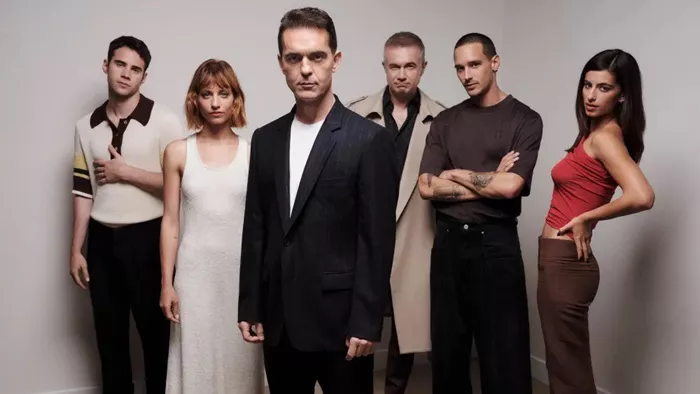“The Last of Us” will be produced by HBO in 2023, starring Pedro Pascal, Bella Ramsey, Anna Torv, Gabriel Luna, Melanie Lynskey, etc. Clay A thriller-adventure TV series directed by G. Maxine, Neil Drakman, Peter Hall, Jeremy Webb, Jasmila Zhbanich, Lisa Johnson and Ali Abbasi. The drama will be broadcast in the United States from January 15, 2023 . “The Last of Us” received 6 nominations at the 2023 MTV Movie and TV Awards, and finally won 3 awards for Best Program, Best Partner, and Best Hero[2]; it won the 75th Emmy Awards in 2024 24 nominations, and finally won 8 awards including Best Title Design.
What Is The Last of Us Series About?
“The Last of Us” is a narrative-driven action-adventure series that has transcended its origins as a video game to become a significant cultural phenomenon. Developed by Naughty Dog and first released for the PlayStation 3 in 2013, the series has been praised for its deep storytelling, complex characters, and emotional impact. It consists primarily of two main games: “The Last of Us” and “The Last of Us Part II,” with a third installment announced. The franchise has expanded to include a comic book series and an HBO television adaptation, which has further broadened its appeal and influence.
Genesis And Gameplay Mechanics
“The Last of Us” was conceived by Neil Druckmann, who also served as the creative director for both games in the series. The gameplay combines action-adventure, survival horror, and stealth with a strong emphasis on narrative and character development. Players control Joel, a hardened survivor, in the first game, and Ellie, a young girl who may hold the key to curing the global pandemic, in both games. The gameplay is interspersed with cinematic cutscenes, and the player’s decisions can affect certain outcomes, adding a layer of personal involvement in the unfolding story.
Narrative And Setting
The series is set in a post-apocalyptic world where a fungal infection has led to the collapse of civilization. The infected humans become aggressive and eventually mutate into horrific forms, which pose a constant threat to the survivors. The government collapses, and in its place, various factions rise, each with their own methods and morals for survival.
The story of the first game begins in 2013, swiftly moving to 20 years after the initial outbreak. Joel is tasked with smuggling Ellie out of a quarantine zone in what starts as a simple job but soon transforms into a profound and emotional journey across what remains of the United States. The narrative explores themes of loss, guilt, survival, and the moral complexities of a world in which the lines between right and wrong are blurred.
In “The Last of Us Part II,” which takes place several years after the first game, the story shifts focus more onto Ellie. It explores her struggles with the consequences of violence and the pursuit of vengeance. This sequel expands on the moral complexities and emotional narrative of the first game, diving deeper into the cycle of violence and its impact on individuals and communities.
Characters and Development
Joel and Ellie are the heart of “The Last of Us” series. Joel, who has suffered immense personal loss, initially appears emotionally unavailable and solely focused on survival. Ellie, on the other hand, though young, shows remarkable resilience and maturity. Their relationship, which develops from one of necessity into a deep, familial bond, is central to the emotional core of the series.
The characters are crafted with profound backstories and realistic emotions, which are expressed not only through the dialogue and voice acting but also through the game’s facial animation technology. This attention to detail in character development allows players to empathize deeply with the protagonists, making the game’s often heartbreaking choices even more impactful.
Artistic And Technical Achievements
“The Last of Us” series is notable for its high production values, including its graphic realism, attention to detail, and atmospheric use of sound and music. Gustavo Santaolalla, an Academy Award-winning composer, provided the hauntingly beautiful scores for both games, which play a crucial role in setting the tone and enhancing the emotional depth of the narrative.
The games’ visual aesthetics are characterized by their depiction of nature reclaiming urban spaces — cities overrun with vegetation and wildlife, creating a poignant contrast between the beauty of nature and the decay of civilization. This juxtaposition is not only visually striking but also serves as a narrative element that underscores the themes of survival and renewal.
Cultural Impact And Reception
Upon release, “The Last of Us” was met with critical acclaim, praised for its innovative approach to storytelling in video games. It received numerous awards and accolades, including multiple Game of the Year awards. The impact of the series extends beyond just the gaming community; it has sparked discussions on topics such as the narrative potential of video games and their capacity to evoke deep emotional responses.
The HBO adaptation of “The Last of Us” has brought the story to an even wider audience, receiving praise for its faithful adaptation and exploration of the characters and themes of the original games. This crossover appeal has solidified the series’ place not only in video game history but also in wider pop culture.
Conclusion
“The Last of Us” series is more than just a set of games. It is a profound exploration of the human condition, challenging players to confront difficult moral questions and consider the lengths they would go to protect those they care about.
Through its compelling narrative, robust character development, and emotional depth, the series sets a benchmark for storytelling in interactive media. As it continues to evolve and expand its narrative universe, “The Last of Us” remains a poignant reflection on love, loss, and the instinct for survival — themes that resonate universally.
Related topics:


























